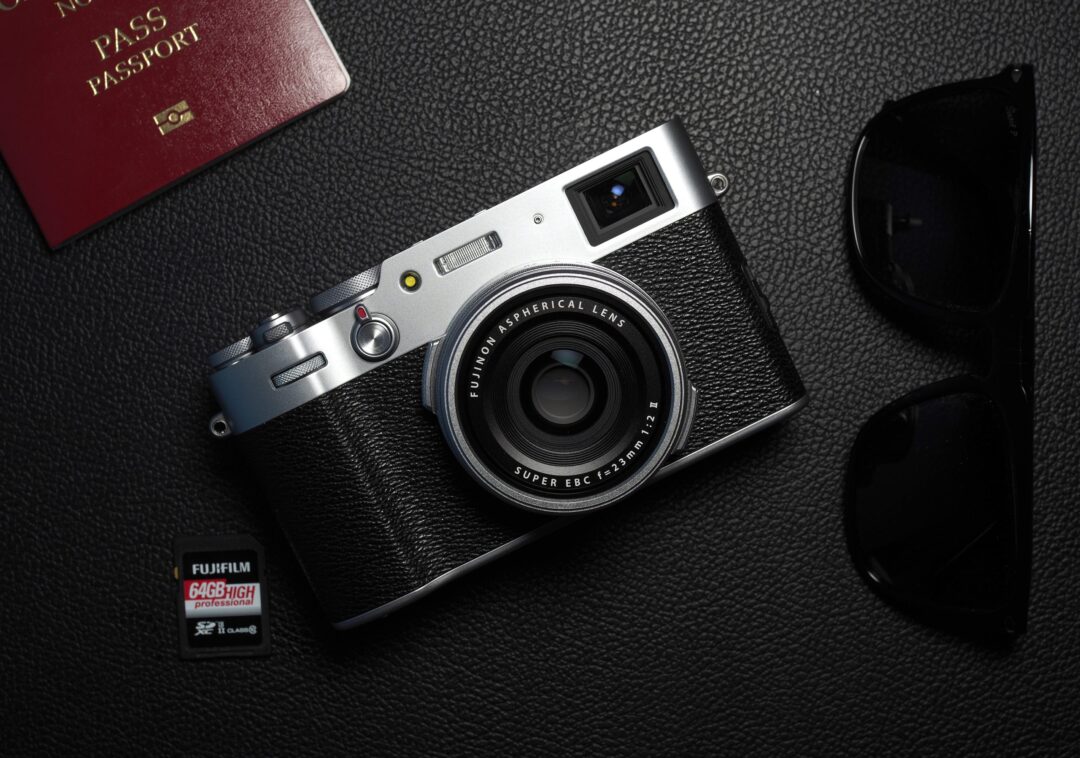Three years ago, we concluded that the Fujifilm X100F was one of the best and funniest compact cameras we had tested. Now the sequel is here, and the X100V addresses a couple of things we missed, making it the most complete compact camera we know of.
Some may object that the camera lacks zoom, but there is no shortage, there is a possibility. To think a little more before pressing the shutter button. Maybe it will make the pictures better. In any case, there is nothing to complain about the image quality, which is almost identical in terms of resolution and dynamics, such as the system cameras X-T3 and X-Pro3 from Fujifilm.
In other words, the very best image quality you can find in any camera, with image chips in APS-C format.
Fujifilm X100V is, as the name reveals, the fifth edition in a series that debuted in 2010, and is both the best equipped and so far the most usable of the five.
The camera is almost the perfect travel camera, absolutely beautiful for street photography, and has so many features that many will do excellently with the X100V, even though it only has a fixed focal length.
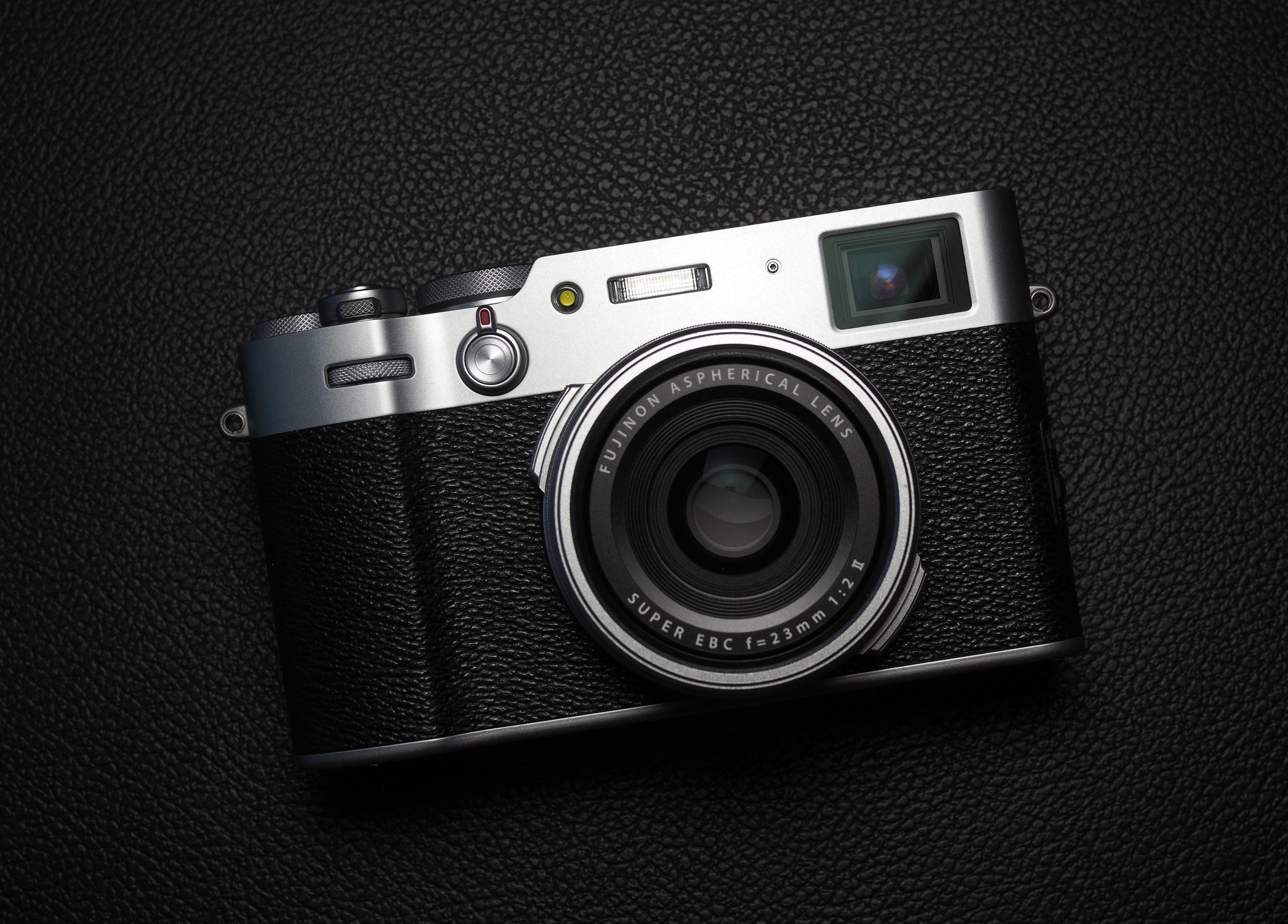
The fifth edition is not only the most expensive, the camera has been upgraded with an even better 26 Mp image sensor, sharper OLED viewfinder, real 4K video – and tiltable touch screen!
Absolutely true.
Tiltable touch screen
You can hardly see that the touch screen is tiltable. It is so perfectly integrated in the camera body that it lies completely flat on the back. A small tab at the bottom left reveals that the screen can be tilted out, up and down. Actually quite practical, both for street photography, but also for video. Where you can keep the camera away from your face and film more discreetly.
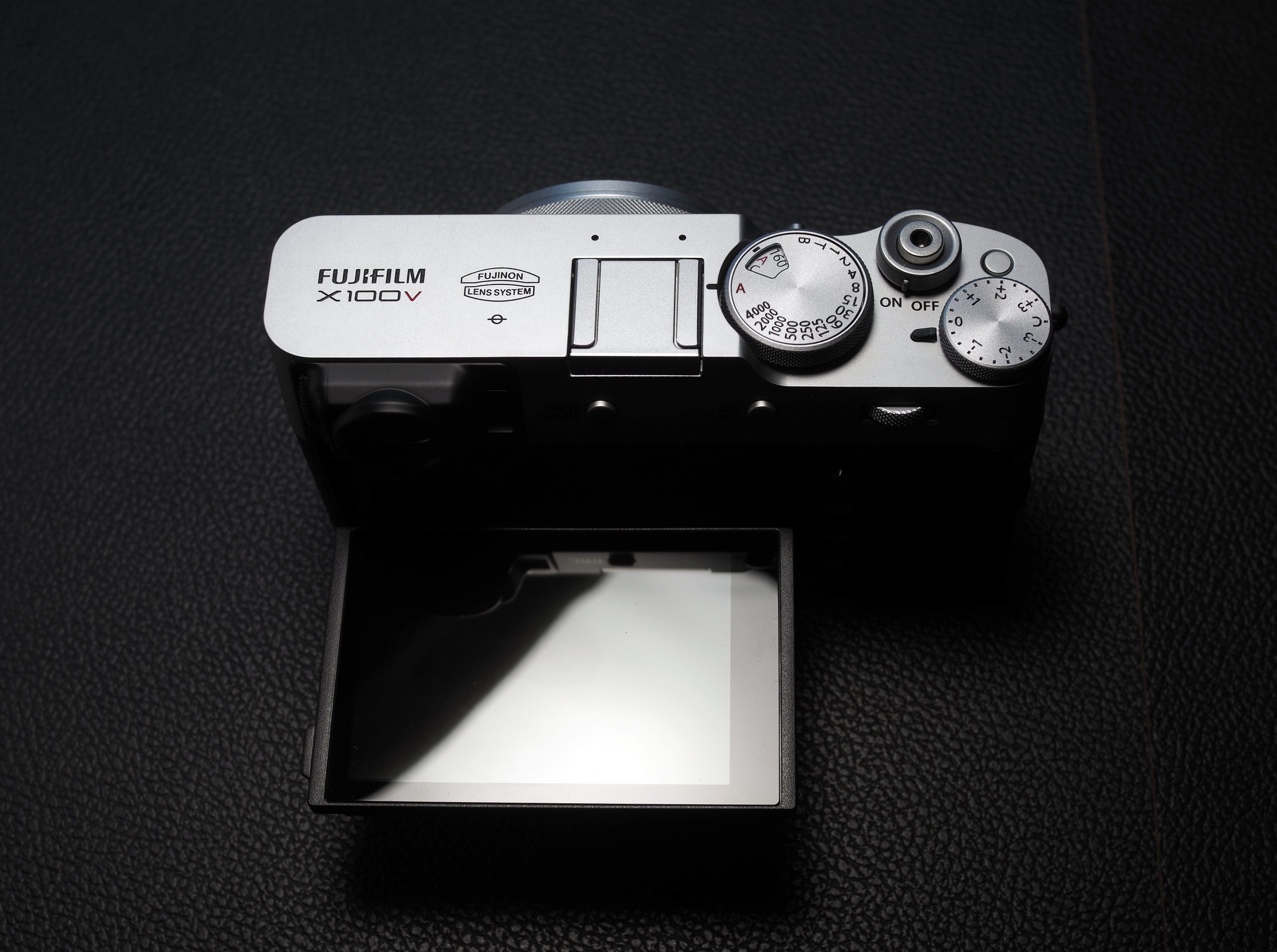
The tilt screen is not the only thing new on the X100V, let’s take a look at the most important features of the camera:
Same 26 Mp X-Trans image chip as X-Pro3
New 23mm with 8 elements, 2 aspherical
Hybrid viewfinder with OLED panel
4K / 30p 8-bit video, 200 Mbps, F-Log
No image stabilization
Up to 11 frames per shot, 38 jpeg, 17 raw
425 focus points with phase and eye focus
Tiltable touch screen
Rear joystick at the rear
4-stage ND filter
Headphone out with adapter
Host sealed together with adapter / filter
17 film simulations
160-12800 ISO
Redesigned camera
The camera body is also new. Although it may not be that easy to spot. The top and bottom plates are now in aluminum, and the flash shoe is flush with the top plate. The shutter speed wheel is centered, and finally the ISO ring stays up when changing ISO values. The lock on the battery cover has been redesigned, and does not open so easily when it should not be opened at all.
But let’s start inside.
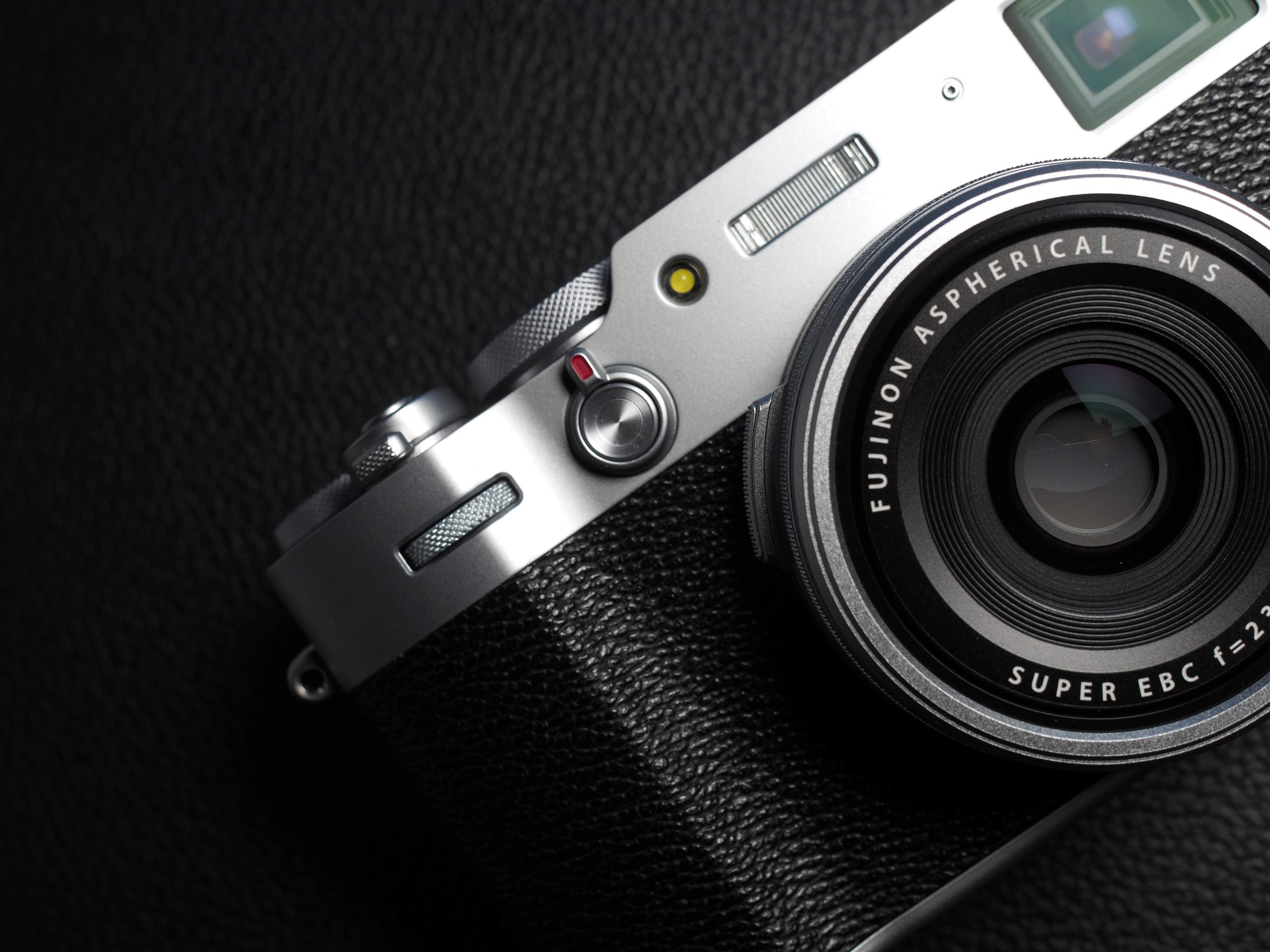
The camera has the same X-Trans CMOS 4 image chip as the X-Pro3, and Fujifilm’s X-Processor Pro 4. Here it means the very highest detail resolution possible in this class, and 4K video with 200 Mbps and F-Log, if only 8-bit. However, 10-bit 4: 2: 2 is possible if you are filming to an external recorder.
In other words, a lot has happened since the X100 debuted with a 12 Mp image chip, and 720 video in 2010. But it is not until now that Fuji has found it sensible to upgrade the lens. The X100 series has had the same 23mm f2 only with marginal changes in the anti-reflective coating, as far as we know.
New lens
The new Fujinon 23mm f2.0 II has been redesigned (equivalent to 35mm), but is an equally simple construction with only eight lens elements, and two of them are aspherical. Fuji has tried to solve two of the problems of the previous 23, namely falling corner sharpness at full aperture and diffuse sharpness at close-ups. They have succeeded very well with this, because the new 23 is noticeably sharper, also at the edges.
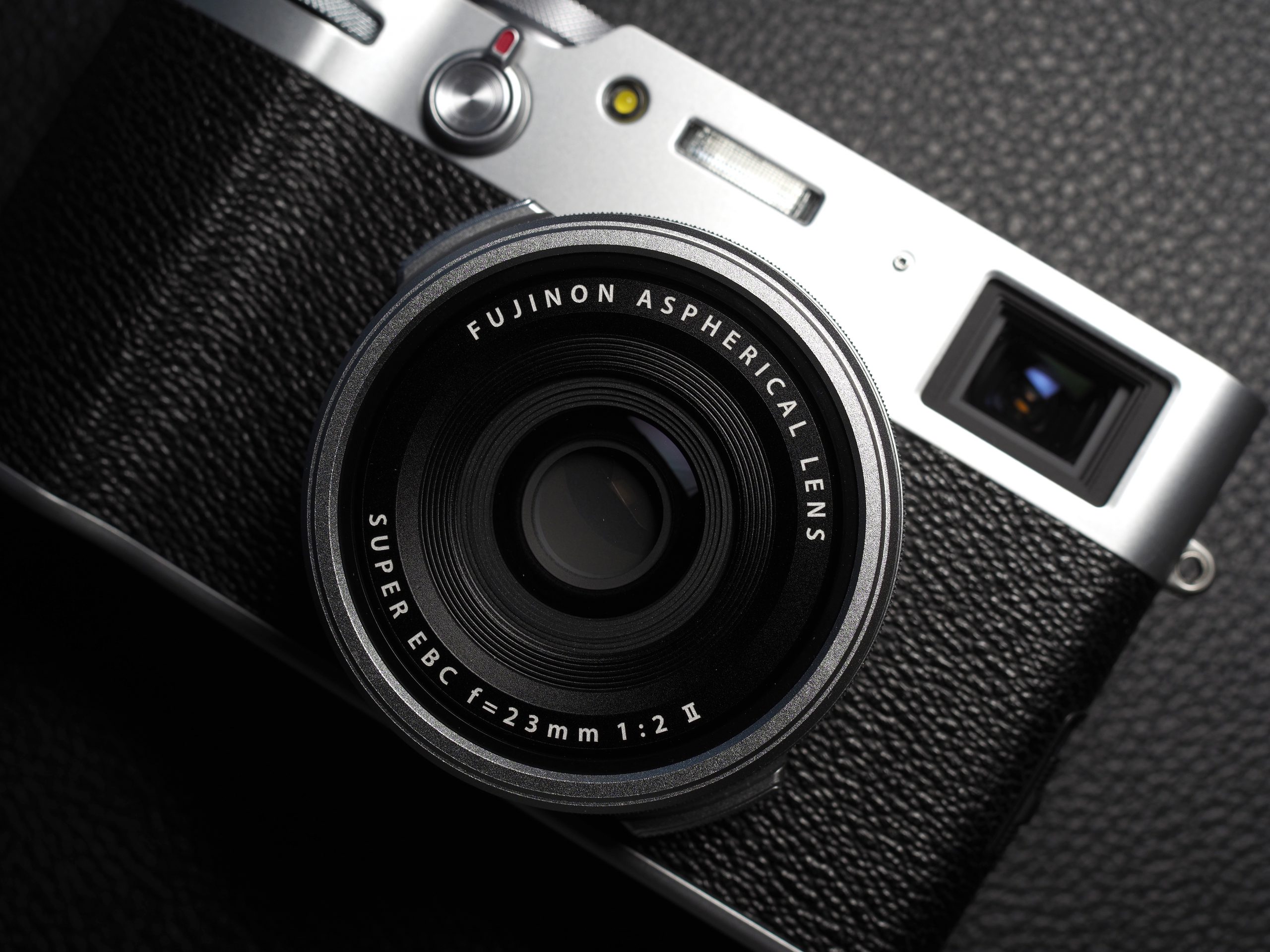
The camera also has a four-stage ND filter – gray filter – to make it easier to shoot at full aperture in high light. For example. at weddings.
The autofocus has not received any noticeable speed improvement, which I have noticed. It was reasonably fast on its predecessor, but focus tracking, eye and face focus, I think is more precise on the X100V. You can also set a defined focus area by limiting the autofocus to the distances you intend to use. Thus can can make the camera a little faster.
The lens has the same threaded ring on the front, which is unscrewed when using the adapter ring on which you can put the sun visor. This means that you can also use the same telephoto and wide-angle lenses that already exist for the X100 series.
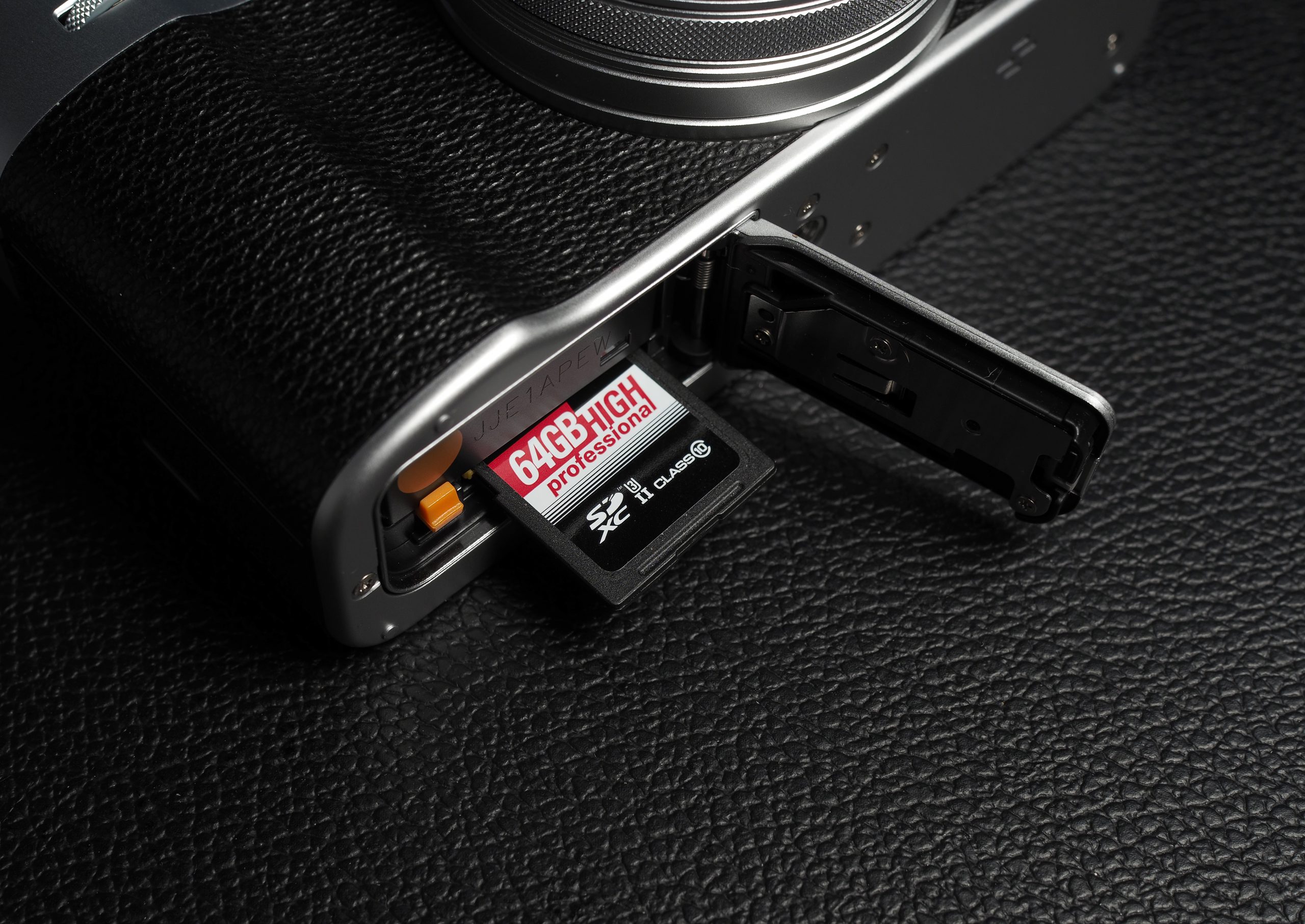
The camera is also weatherproof, but not exactly on the front of the lens. According to Fujifilm engineers, this is because they would retain the compactness of the lens and that weather sealing would lead to too many compromises.
Instead, you can buy a neutral filter for the front of the lens, which makes the camera 100 percent splash-proof.
OLED and optical viewfinder
The camera’s hybrid viewfinder has been improved and the glass that covers 95 percent of the image area is largely the same as on the X-Pro3, while the OLED panel is new with much better color reproduction, contrast, brightness and resolution, than on the X100F.
You switch between optical and electronic viewfinder with lever in front of the camera, and if you focus manually, you can get a screen display at the bottom right with magnification of the center, so it becomes easier to focus. If you use the OLED screen, you can use the digital split image in viewfinders, and on the screen as a focus aid.
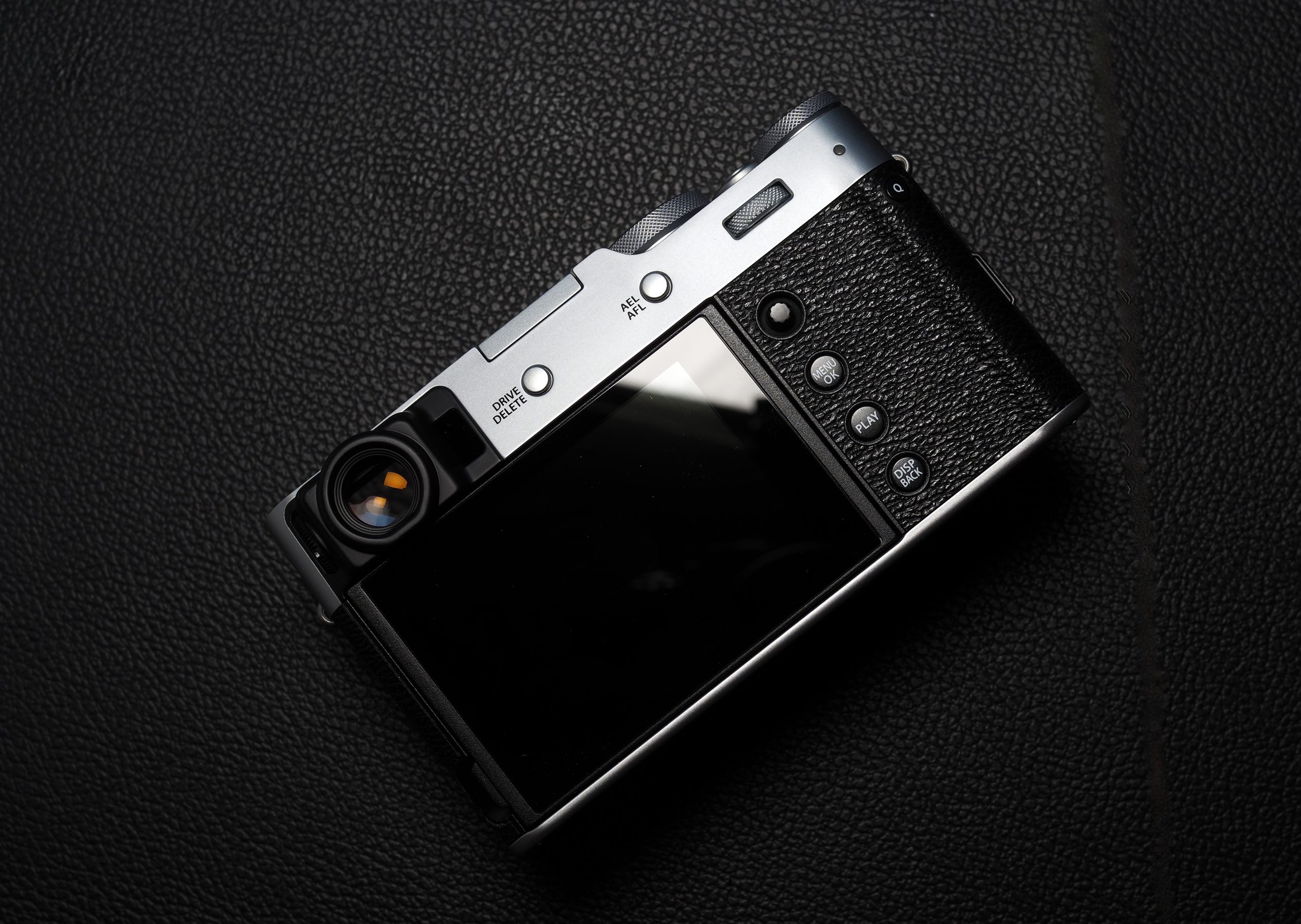
Digital teleconverter
Should you not get close enough with 35mm focal length, you can choose 50 or 70mm focal length which is digitally scaled up in the camera, to full resolution. As mentioned, the X100V can use the same optical converters as its predecessor, the TCL-X100S II which provides 50mm optical focal length, or the WCL-X100S II which provides 28mm wide angle.
Connections
Videographers would like to use a separate microphone, and you can do that here, but only with a 2.5mm miniack. otherwise you must have an adapter. Since the camera does not have a headphone output, you should choose a mic with a headphone output.
The camera can also be controlled remotely, either wirelessly with the Fujifilm app on your mobile phone, or with a cord release. It also has a connector for electronic remote control, HDMI output, and it has a USB 3.1 connector for charging and image transfer up to 5 GBps.
Ease of use
Few cameras are so satisfying to photograph with. The analog control over the camera, the large viewfinder and the camera’s benevolent autofocus and responses make it almost impossible to put down. Short image series can be fired at up to 11 images / s, and you can program buttons and steering wheel almost as it suits you.
Fuji has removed the four-way buttons on the X100V, but equipped the camera with a joystick instead. Which can be used to move around the focus sensors, up to 425 sensors grouped out over the image area, or limited to a smaller area.
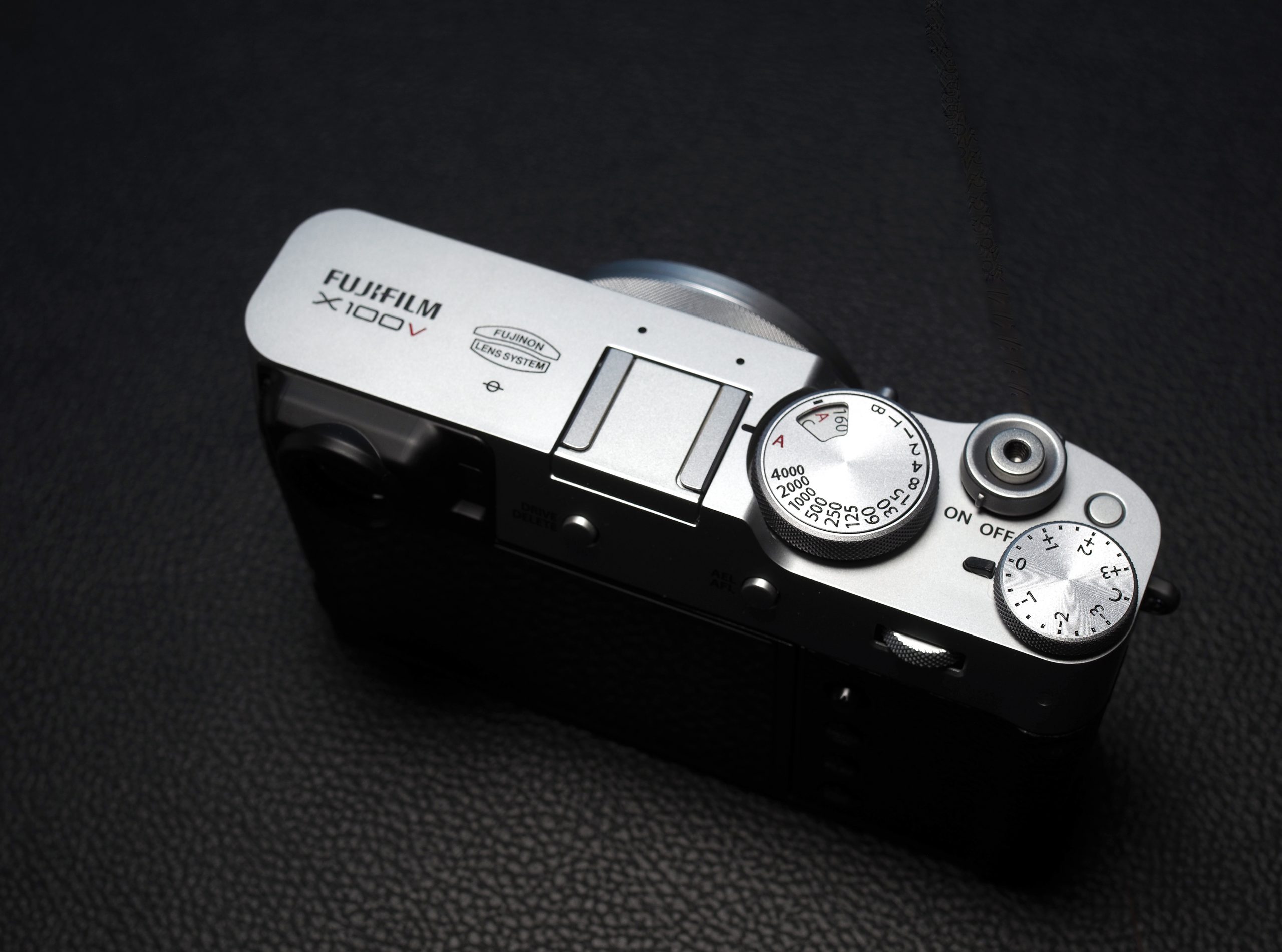
The smart Q button activates several – selectable – speed dials on the touch screen, making the process of changing settings even shorter than before. The focus ring is nicely weighted, and can be used for other things if desired. The very narrow aperture is slower than before, with more marked click stops, without it feeling like a disadvantage.
But Fuji refuses to put a lock on the aid for exposure compensation, so watch out so it does not suddenly stand in a position you have not chosen yourself.
We’ve said it before, most recently in the test of the X-Pro3, and the X100V is also a bit slick. It also has no marked grip, and I have seen many who put on a so-called thumb grip in the flash shoe on their X100s, to get a more chewy grip.
The image quality
But there is no reason to complain about the image quality. Fujifilm has really succeeded with the jpeg processing on its cameras, and the X100V is no exception. The quality of the image files is very similar to what I saw from the X-Pro3, and cameras reproduce colors in a way that is not common from a compact camera.
The contrast, texture and hues are simply magnificently rendered. This is also because they use the X-Trans filter instead of a Bayer filter, and here it is possible to get a sharpness of detail in the images that we usually associate with cameras that have much higher pixel resolution.
The high ISO performance is very good, and the camera has good control over conc and color noise up to 6400 ISO, which is the limit for where image noise can be annoying.
But what about the new lens? The optical performance is a marked improvement from the predecessor’s 23mm, especially at close range and here the near limit is 10 cm so you can get close. The sharpness is much better over the entire image surface, and there is less vignetting at full aperture here. The corner sharpness is also visibly better at f2, and gets even better at f2.8, while it is almost perfect from f5.6.
The camera is loaded with Fujifilm’s fine film simulations. The slide film Velvia, it also has Eterna, Provia, Astia, Acros and the new Classic Negative – and Color Chrome Effetc. Which increases the contrast and saturation, while Color Chrome Blue adds a blue tinge to the images.
For the really nostalgic expressions, one can add grain effect to the black and white images.
The film simulations can also be used on video, and with 4K resolution, it has suddenly become much cooler to film with an X100 as well. Here, the tiltable touch screen really comes into its own, because then you can control focus and shooting with your finger on the screen.
Conclusion
The Fujifilm X100V has finally become as complete as one could wish for. It is not completely weatherproof, but it can be made 100 percent weatherproof for a few hundred bucks extra, should you need it, but the most important thing is nothing to complain about. The image quality is impeccable, you can film in 4K, and it has both fast and precise autofocus – and a tilting touchpad. Which only makes the camera even more usable for even more people. In addition, it is simply fun to photograph with, and that can inspire even better photos.

We think
Compact and travel-friendly, superb image quality, fast autofocus, 4K video and tiltable touch screen. Weather proofing requires extra equipment.
1499 €
Specifications
- Type: 26 Mp compact camera X-Trans image sensor in APS-C format
- Optics: Fujinon 23mm f2 (35mm)
- Screen: 7.6 cm LCD, 1.6 Mp pixels
- Viewfinder: 3.7 Mp OLED, 0.52 x, optical.
- Burst: 11 frames / s
- Video: 4K / UHD 30p, 200 Mbps
- Connections: Remote release, USB 3.1, HDMI, 2.5mm microphone
- Wireless: Bluetooth, Wifi
- Storage: SD / SDHC / SDXC with UHS-I
- Battery life CIPA: 420 images
- Dimensions / weight: 128 x 75 x 53 mm / 478 kg
- Highlights: Tiltable touch screen, 4-stage ND filter, 1 / 32,000s electronic shutter, 425 focus points, joystick, weather seal with adapter.
